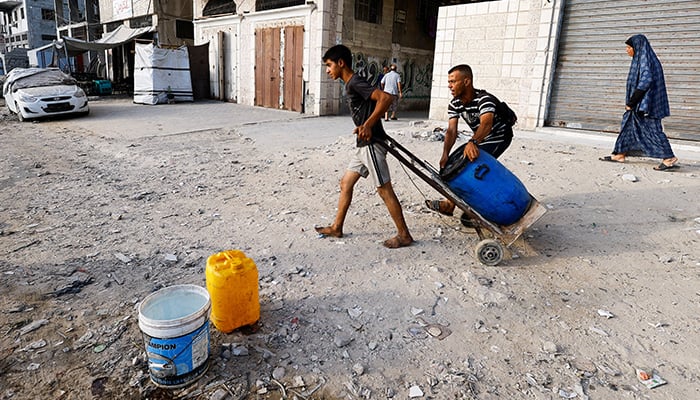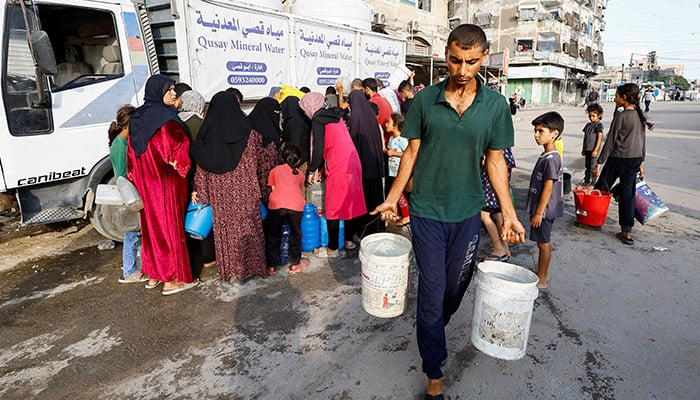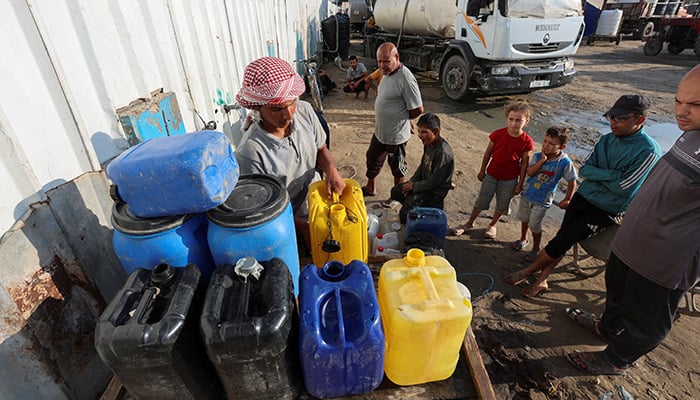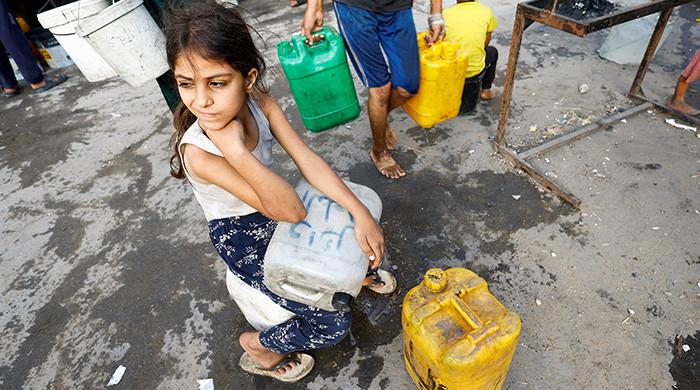Weakened by hunger, many gazanes walk through a ruined landscape every day to transport all its water to drink and wash the water, a painful load that is still well below the necessary levels to keep healthy people.
Although global attention has become hunger in Gaza, where after 22 months of a devastating Israeli military campaign, a world hunger monitor says that a famine scenario is developing, the water crisis is so severe according to help groups.
Although some water comes from small desalination units administered by help agencies, most are extracted from wells in a brackish aquifer that has been contaminated by wastewater and chemicals that are filtered through the debris, spreading diarrhea and hepatitis.
Cogat, the Israeli military agency responsible for coordinating aid in the Palestinian territories occupied by Israelis, says that operates two water pipes in the gaza strip that provides millions of liters of water per day.
Palestinian water officials say they have not been working recently.
Israel stopped the entire water and electricity supply to Gaza at the beginning of the war, but resumed some supply later, although the pipe network in the territory has been seriously damaged.

Most of the water and sanitation infrastructure has been destroyed and the aquifer pumps often depend on the electricity of small generators, for which the fuel is rarely available.
Cogat said the Israeli army has allowed coordination with help organizations to bring equipment to maintain water infrastructure throughout the conflict.
Moaz Mukhaimar, 23 years old and university student before the war, said he has to walk around a kilometer, queuing for two hours, to look for water. He often goes three times a day, dragging her back to the family’s store on a land full of potholes in a small metal hand car.
“How long will we have to stay like this?” He asked, pulling two larger boats of very brackish water to use for cleaning and two smaller water to drink.
His mother, Umm Moaz, 53, said that the water he collects is necessary for the extended family of 20 people living in his small group of tents in Deir Al-Balah in the Central Gaza Strip.
“Children keep going and coming and it’s hot. They still want to drink. Who knows if we can fill again tomorrow,” he said.

Their fight for water is replicated through the small territory full of people, where almost everyone lives in shelters or temporary tents without wastewater or hygiene and there is not enough water to drink, cook and wash while the disease spreads.
The United Nations says that the minimum emergency level of water consumption per person is 15 liters per day to drink, cook, clean and wash. The average daily consumption in Israel is around 247 liters per day according to the Israeli Rights Group B
Bushra Khalidi, humanitarian policy, the Oxfam Aid Agency in the Palestinian territories occupied by Israelíes said that the average consumption in Gaza was now 3 to 5 liters per day.
Oxfam said last week that the diseases transmitted by preventable and treatable water were “torn through Gaza”, and reported rates increased by almost 150% in the last three months.
Israel blames Hamas for suffering in Gaza and says that it provides adequate help for the 2.3 million inhabitants of the territory.
Water queues
“Water scarcity is definitely increasing a lot every day and people are basically rationing between or wanting to use water to drink or want to use a lot for hygiene,” said Danish Malik, a world official of water and sanitation for the Norwegian refugee council.

Simply queue for the water and take it now explain hours every day for many gazans, often involving thrust with others for a place in the tail. The fights have sometimes broken, the Gazans say.
Collecting water is often children’s work, since their parents seek food or other needs.
“Children have lost their childhood and have become plastic containers carriers, running behind aquatic vehicles or that go to remote areas to fill them for their families,” said Munther Salem, head of water resources of the water quality authority and the environment of Gaza.
With water so difficult to get, many people who live near the beach are washed in the sea.
A new water pipe is planned by the United Arab Emirates to serve 600,000 people in southern Gaza of a desalination plant in Egypt. But it could take several more weeks to connect.
You need much more, help agencies say. UNICEF spokesman James Elder said long -term deprivations were becoming mortal. “Hunger and dehydration are no longer side effects of this conflict. There are many first -line effects.”
Khalidi de Oxfam said that fire and access without restrictions for help agencies to resolve the crisis was necessary.
“Otherwise, we will see people who die from the most preventable diseases in Gaza, which is already happening before our eyes.”




